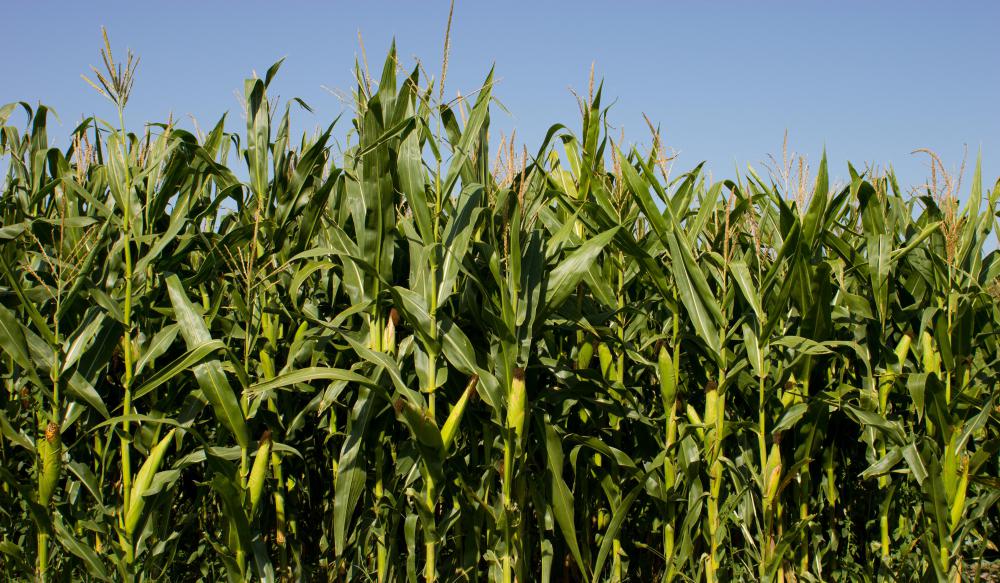At WiseGEEK, we're committed to delivering accurate, trustworthy information. Our expert-authored content is rigorously fact-checked and sourced from credible authorities. Discover how we uphold the highest standards in providing you with reliable knowledge.
What Are the Best Tips for Canning Corn?
Canning is a method of preserving foods such as corn for consumption later in the year when those foods' fresh counterparts are not available. Corn should be harvested when it is in the milk stage for the best canning results. Water-bath canning methods should not be used with corn; instead, one should use a pressure canner. Corn can be canned as creamed corn or as whole kernel corn and can be hot- or raw-packed. The size of the canning jars used will likely depend on whether creamed or whole kernel corn is being canned.
When canning corn, one should choose fresh corn picked in the early morning for the best flavor. The ears should be plump and ripe and the kernels should be tender. The corn should be in the milk stage, meaning a milky juice is released if the kernels are punctured. If possible, one should begin canning corn within six hours of harvesting; otherwise, the corn should be refrigerated or kept fresh with ice. Husks and as much silk as possible should be removed, a task that can be made easier with a small vegetable-cleaning brush.

Pressure canning is a method used frequently when canning corn, a vegetable with low acidity that requires a high temperature of 240° Fahrenheit (about 115° Celsius) to kill dangerous bacteria. Water bath canners cannot reach this temperature and should not be used when canning corn. If the rack is missing from the pressure canner, then sealing rings can be placed on the bottom of the canner to keep jars and the canner separated. Rubber rings also can be stretched around the jars to keep them from hitting each other and breaking during processing.

Whole kernel corn is made by slicing the kernels off the cob at the base, while creamed corn is made by slicing the kernels half-way off the cob and then using the back of a knife to remove the juice and heart of the kernels. To raw-pack corn, one can simply place corn in a jar without cooking it first, because the heat in the pressure canner will kill any dangerous bacteria. Hot-packed corn is heated until it boils and is placed in the jar while the corn is still hot; it is the method preferred by experts on food safety because any bacteria are killed before canning. Both of these methods will work for canning corn, whether canning whole kernel or creamed. One should always remember to leave about 1 inch (2.5 centimeters) of headspace in the jar to account for any expansion by the corn as it is processed.
Jar size is an important consideration in canning corn. Creamed corn is very dense and is most commonly canned in pint (500 mL) or half-pint (250 mL) jars. Whole kernel corn is commonly canned in pint (500 mL) or quart (0.95 L) jars. Dial-gauge canners take 85 minutes at 11 pounds (about 5 kg) for quart (0.95 L) jars and 55 minutes for pint (500 mL) jars but need more pressure if the canning is being done 2,001 feet (about 0.6 Km) or more above sea level. Weighted-gauge pressure canners require 55 minutes for pint (500 mL) jars and 85 minutes for quart (0.95 L) jars at 10 pounds (about 4.5 kg) of pressure with more pressure required if canning 1,000 feet (about 0.3 Km) above sea level.
AS FEATURED ON:
AS FEATURED ON:












Discuss this Article
Post your comments